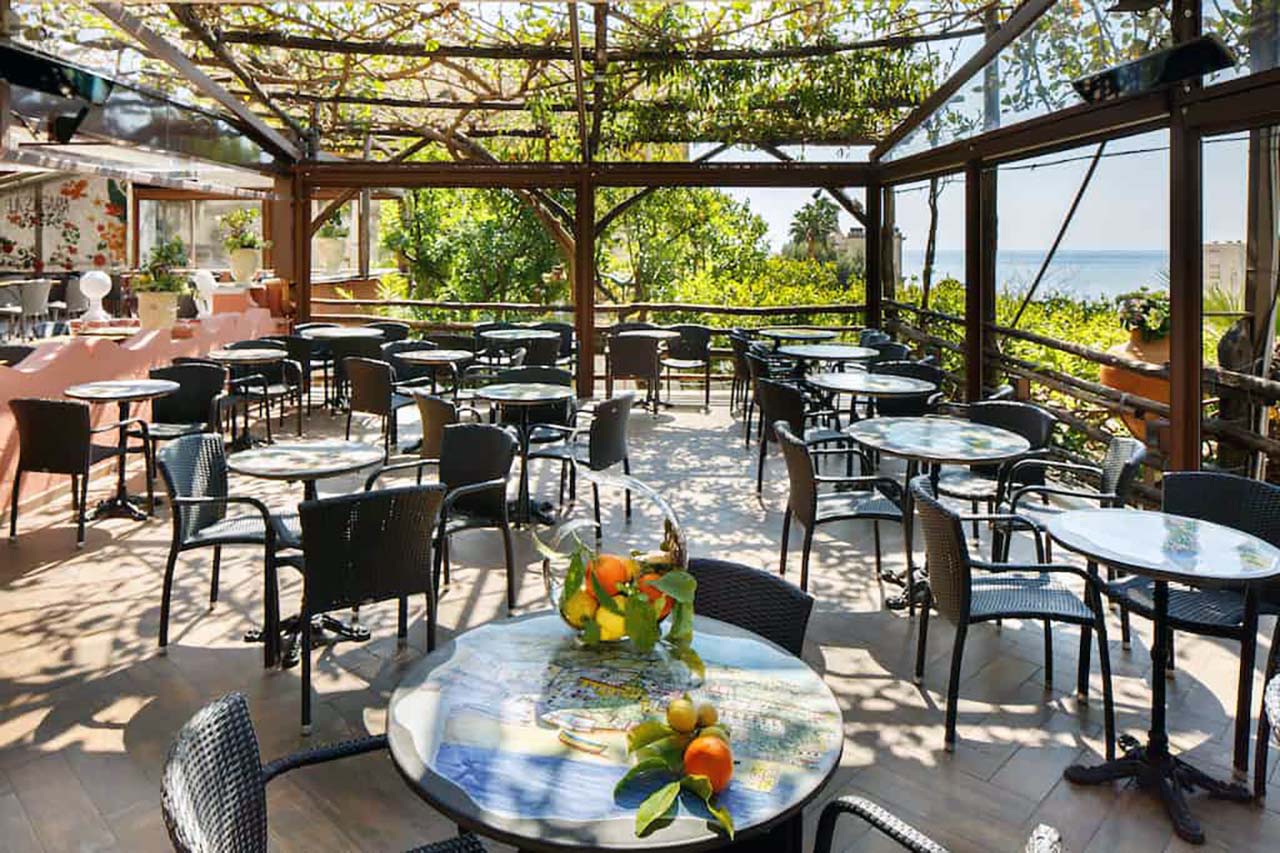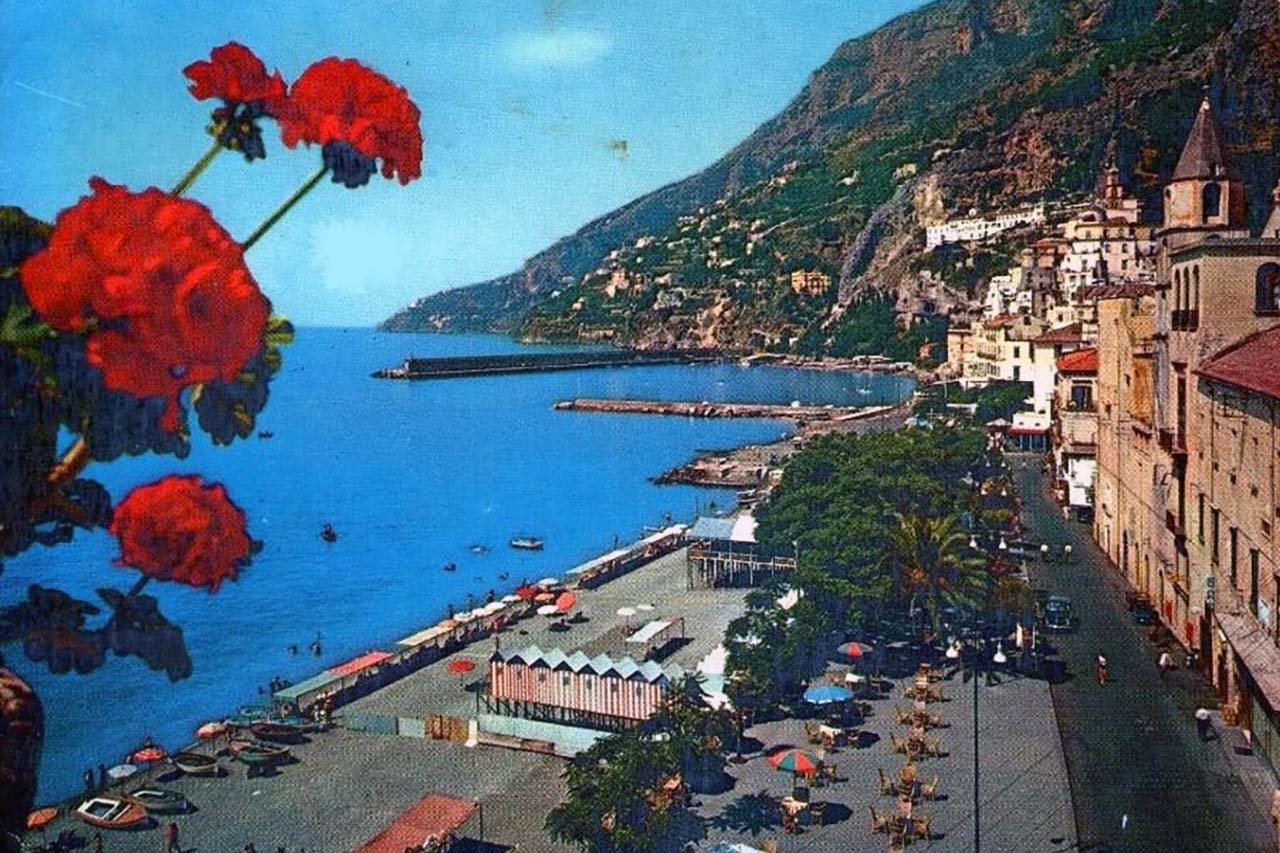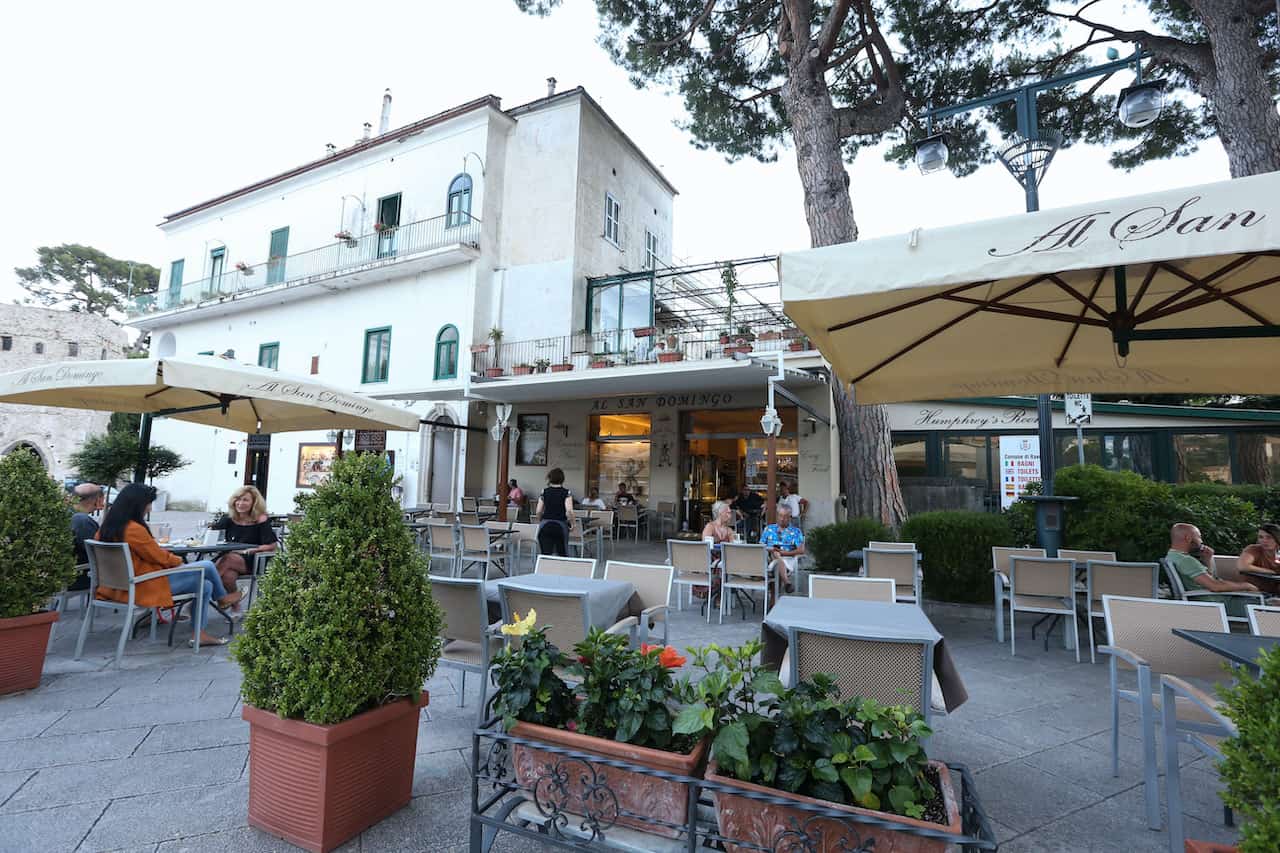Bar Internazionale, La Zagara, Bar del Sole, Gran Caffè, San Domingo: history, identity and synecdoche of the area
April 6th, 2021.By Antonella Florio. Photo by Cottombro (pexels.com)
Synecdoche is a rhetorical figure for which we figuratively use a part for the whole. Thus, we often say, ‘let’s go to the Bar Internazionale!’ to mean ‘let’s go to Positano,’ ‘see you at the Bar del Sole!’ to tell ‘see you in Praiano!’, ‘I’ll meet you at the ‘Gran Caffè‘ means ‘see you in Amalfi.
The use of language, already quite interesting in itself, is a vehicle for even deeper information: it tells us that these bars are not just meeting places but icons, spaces of the heart, and authentic identity cores of the countries in which they arise.

Bar Internazionale, Positano’s bar atelier
It was born in Positano in the mid-1920s from the intuition of a Positanese man, Antonio Celentano. An eccentric and avant-garde type, he opened the Internazionale first as a soda factory and then as a bar after returning from a stay in New York. Antonio imports customs and traditions from America and begins serving cocktails and champagne to the beat of jazz. In the 1960s, management passed to the Collina family.
“My father, Domenico Collina, known as Mimì, was a kind of patron: he was a friend of all the artists – at the time, they called them hippies – who passed by the bar Internazionale. Eduardo De Giorgio, the best exponents of Italian pop art-such as Schifano and Tano Festa-were in the habit of displaying their works inside the Internazionale, using it as a real atelier,” says Luigi Collina, Mimì’s son and current manager of the bar together with his sister Paola.
Luigi inherited his father’s genes and, for his drawings-displayed inside the bar-signed with the pseudonym Severin. “Severin was the name of a New Wave bass player that I liked. I love music, drawing, comics, illustrations, and landscapes. My dream is to make the bar an all-around sensory experience and to return to the cultural proposition of the 1960s by opening the doors to emerging artists and beyond. I would also like to reintroduce the chess tournaments we used to organize until the late 1990s.”

La Zagara, a hidden paradise
Alessandra Russo, class of ’69, is the current owner of La Zagara, a Positano bar and pastry shop established in the early 1960s with her father, Giacomo Russo, known as Giacomino, and a meeting place for residents and Hollywood personalities.
“My father chose the name la Zagara. He was inspired by the orange blossoms – or Zagara flowers – in the bar’s garden, a citrus grove still populated by orange, lemon, and grapefruit trees. From the outside, no one would imagine the presence of this hidden paradise,” says Alessandra.
For the past 15 years, she has been running the business. “There is the saying: one generation builds, one maintains, another destroys. I have tried to safeguard what my father built by doing my best. I dream of a more sustainable Coast that moves less frenetically and establishes a deeper and more empathetic relationship with the visitor. It was what I saw as a child alongside my father, and I saw it again last summer amid the pandemic. Maybe not all ills come to harm.”

Bar del Sole, the hangout of the Praianese
It was 1980 when Teodoro Rispoli, known as Teo, and his nephew Silvio Rispoli, were 20 years old. They enrolled in the Faculty of Economics at the University of Salerno and decided to open Bar del Sole. “I chose the name. Uncle Teo was skeptical. He feared the name would become an object of ridicule: it was easy for it to be changed from bar del sole to bar ‘sul,’ ‘lonely’: at the time, this was the most deserted place in Praiano, the summer season was only two months long, and Praianesi didn’t have much money to go to the bar. Forty years later, I think Uncle Teo was wrong,” says Silvio Rispoli, current manager of the bar along with Annamaria and Tiziana and a pillar of the business for the past 40 years, with a hint of pride.
“I have seen entire generations of Praianesi at our tables. I’ve seen them, as children, littering floors and surfaces with ice cream, as teenagers, talking about love, as adults, bringing their children here all the time, getting candy and ice cream.” Tourists who come to the Ber del Sole enjoy this more unique than rare sight, a sight of simple things, authenticity, and village life. “The Bar del Sole was born as an Italian bar where the lives of the fisherman, the tourist, the teacher, and the bricklayer meet and dialogue. I have heard foreign visitors say. It’s nice here because I feel at home. I don’t feel treated like a tourist!'”
Silvio is a man of depth, great humanity, and broad and long views. “My studies have served me to give an identity to the bar, to maintain it over time; they have served me not to compromise with the mere logic of profit. Ours is not a tourist café; it is, first and foremost, the café of Praianesi. We are not just sellers of coffee and drinks but also emotions.”

Gran caffè, the metteing place of the Amalfitans
The Gran Caffè, a bar established in Amalfi in 1939 at the behest of Don Dino Lucibello and his brother Alfredo Lucibello, had much the same function. Doctors, lawyers, notaries, professors, and politicians used to sit there, discuss events, make decisions, and plan for the future, perhaps over a good coffee, divided equally seven, as only true nobility knows how to do. Salvatore Dipino, manager of the Gran Caffè since 2006, and his brothers tell us.
“The Gran Caffè has always been the symbol of the town. All political decisions were made at the café. All the nobility of Amalfi used to meet here, in winter in the indoor hall and in summer outside at the entrance to the bar. Since we took over in 2006, the old customs have mixed with the new, and a large crowd of young people had begun to populate this corner of Amalfi until a few years before appeared deserted. We are very proud to have contributed to the enhancement of the eastern side of the town.”
One of the challenges of the 21st century for the Grand Café is precisely trying to intercept the new needs of society without betraying the café’s most authentic imprint. “With the young people, we have always had a cordial dialogue based on respect and sympathy; I think they see us as big brothers. I think they admire the professionalism but, above all, our smiles.”

The San Domingo in Ravello, a century-long family history
It is a family story of the San Domingo pastry bar in Ravello, a story that began in 1929 with Luigi Schiavo and his wife Emilia Palumbo, continued over the years with his sons Ferdinando and Alfonso Schiavo, and, since 2013, in the hands of the third and fourth generations: Luigi, Giancarlo, Marco Schiavo and Luigi’s son Fernando. “Ours is an artisanal pastry bar story handed down for generations. My son Fernando has been working alongside me for several years, bringing innovation, especially in cocktails. I think the key to the company’s growth lies precisely in dialogue with young people,” is how Luigi Schiavo, Fernando’s father and worthy heir to several generations of entrepreneurs, tells us. But the story of San Domingo does not end only in the family lexicon.
Over the years, countless musicians, movie stars, public figures, and world financial bigwigs have sat at the bar: Jacqueline Kennedy, Bruce Springsteen, Sting, Tim Robbins, Susan Sarandon, Woody Harrelson, and many others. “The story with Gore Vidal, above all-a well-known U.S. writer and honorary citizen of Ravello-is a story of friendship,” says Luigi. “The San Domingo was his logistical base: phone calls for him would arrive here. If guests were welcome, they would pass through here, and we would give them directions to the Rondinaia, his home.”
Gore and Luigi’s friendship was like any other, made up of conversations, trust, and even fun. “With all the famous people who passed through here, I always tried to behave as a good host behaves: acting very discreetly, trying to gain trust and respect. I remember a memorable evening: it was 1994. I had the honor of attending a concert for a few intimates that Gore organized at the Rondinaia: Springsteen and Sting were playing. I was there serving them an aperitif-I still remember that it was a simple glass of wine accompanied by salmon crostini-with my mouth open.”
